We use cookies to make your experience better.
To comply with the new e-Privacy directive, you agree to the privacy policy and our use of cookies.
Intel
Intel Core i5-12600K processor 20 MB Smart Cache Box
SKU
BX8071512600K
In Stock
Intel Core i5-12600K Processor (20M Cache, up to 4.90 GHz)

Next Day (UK) Delivery offered on stock items
| Processor | |
|---|---|
| Processor generation | 12th gen Intel® Core™ i5 |
| Processor manufacturer | Intel |
| Cooler included | No |
| Processor codename | Alder Lake |
| Memory bandwidth supported by processor (max) | 76.8 GB/s |
| Processor cache | 20 MB |
| Processor ARK ID | 134589 |
| Processor model | i5-12600K |
| Processor threads | 16 |
| Processor operating modes | 64-bit |
| Processor boost frequency | 4.9 GHz |
| Bus type | DMI4 |
| Component for | PC |
| Processor family | Intel® Core™ i5 |
| Processor cores | 10 |
| Processor socket | LGA 1700 |
| Processor cache type | Smart Cache |
| Package type | Box |
| Performance cores | 6 |
| Efficient cores | 4 |
| Performance-core boost frequency | 4.9 GHz |
| Performance-core base frequency | 3.7 GHz |
| Efficient-core boost frequency | 3.6 GHz |
| Efficient-core base frequency | 2.8 GHz |
| Processor base power | 125 W |
| Maximum turbo power | 150 W |
| Maximum number of DMI lanes | 8 |
| Memory | |
| Maximum internal memory supported by processor | 128 GB |
| Memory types supported by processor | DDR4-SDRAM, DDR5-SDRAM |
| Memory bandwidth supported by processor (max) | 76.8 GB/s |
| Memory channels | Dual-channel |
| Memory bandwidth (max) | 76.8 GB/s |
| ECC | Yes |
| Non-ECC | Yes |
| Graphics | |
| Discrete graphics card | No |
| On-board graphics card outputs supported | HDMI 2.1, DisplayPort 1.4a, Embedded DisplayPort (eDP) 1.4b |
| On-board graphics card maximum resolution (DisplayPort) | 7680 x 4320 pixels |
| Number of execution units | 32 |
| On-board graphics card ID | 0x4680 |
| On-board graphics card maximum resolution (eDP - Integrated Flat Panel) | 5120 x 3200 pixels |
| On-board graphics card refresh rate at maximum resolution (HDMI) | 60 Hz |
| On-board graphics card refresh rate at maximum resolution (DisplayPort) | 60 Hz |
| On-board graphics card refresh rate at maximum resolution (eDP - Integrated Flat Panel) | 120 Hz |
| Number of displays supported (on-board graphics) | 4 |
| On-board graphics card maximum resolution (HDMI) | 4096 x 2160 pixels |
| On-board graphics card DirectX version | 12.0 |
| On-board graphics card OpenGL version | 4.5 |
| On-board graphics card model | Intel UHD Graphics 770 |
| On-board graphics card | Yes |
| On-board graphics card dynamic frequency (max) | 1450 MHz |
| On-board graphics card base frequency | 300 MHz |
| Discrete graphics card model | Not available |
| Technical details | |
| Intel Stable Image Platform Program (SIPP) | Yes |
| Thermal solution specification | PCG 2020A |
| Intel® Active Management Technology (Intel® AMT) | Yes |
| Intel® Secure Key | Yes |
| Thermal Monitoring Technologies | Yes |
| Intel® Turbo Boost Technology | 2.0 |
| Intel Trusted Execution Technology | Yes |
| Intel® Quick Sync Video Technology | Yes |
| Intel® Hyper Threading Technology (Intel® HT Technology) | Yes |
| Intel® Clear Video HD Technology (Intel® CVT HD) | Yes |
| Intel® AES New Instructions (Intel® AES-NI) | Yes |
| Idle States | Yes |
| Execute Disable Bit | Yes |
| Enhanced Intel SpeedStep Technology | Yes |
| PCI Express slots version | 5.0, 4.0 |
| PCI Express configurations | 1x16+1x4, 2x8+1x4 |
| Supported instruction sets | SSE4.1, SSE4.2, AVX 2.0 |
| Scalability | 1S |
| Intel VT-x with Extended Page Tables (EPT) | Yes |
| Embedded options available | No |
| CPU configuration (max) | 1 |
| Graphics output | eDP 1.4b, DP 1.4a, HDMI 2.1 |
| Intel Virtualization Technology for Directed I/O (VT-d) | Yes |
| Intel 64 | Yes |
| Status | Launched |
| Market segment | Desktop |
| Launch date | Q4'21 |
| Intel Virtualization Technology (VT-x) | Yes |
| Processor cache type | Smart Cache |
| OpenCL version | 2.1 |
| Target market | Gaming |
| Features | |
| On-board graphics card ID | 0x4680 |
| Maximum number of PCI Express lanes | 20 |
| Processor package size | 45 x 37.5 mm |
| Processor ARK ID | 134589 |
| Thermal solution specification | PCG 2020A |
| Thermal Monitoring Technologies | Yes |
| Idle States | Yes |
| Execute Disable Bit | Yes |
| PCI Express slots version | 5.0, 4.0 |
| PCI Express configurations | 1x16+1x4, 2x8+1x4 |
| Supported instruction sets | SSE4.1, SSE4.2, AVX 2.0 |
| Scalability | 1S |
| Embedded options available | No |
| CPU configuration (max) | 1 |
| Market segment | Desktop |
| Harmonized System (HS) code | 85423119 |
| Export Control Classification Number (ECCN) | 5A992CN3 |
| Commodity Classification Automated Tracking System (CCATS) | G167599 |
| Use conditions | PC/Client/Tablet |
| Processor special features | |
|---|---|
| Intel Virtualization Technology for Directed I/O (VT-d) | Yes |
| Intel 64 | Yes |
| Intel Turbo Boost Max Technology 3.0 | No |
| Intel® Speed Shift Technology | Yes |
| Intel® Optane™ Memory Ready | Yes |
| Intel® OS Guard | Yes |
| Intel Stable Image Platform Program (SIPP) | Yes |
| Intel® Active Management Technology (Intel® AMT) | Yes |
| Intel® Secure Key | Yes |
| Intel® Turbo Boost Technology | 2.0 |
| Intel Trusted Execution Technology | Yes |
| Intel® Quick Sync Video Technology | Yes |
| Intel® Hyper Threading Technology (Intel® HT Technology) | Yes |
| Intel® Clear Video HD Technology (Intel® CVT HD) | Yes |
| Intel® AES New Instructions (Intel® AES-NI) | Yes |
| Enhanced Intel SpeedStep Technology | Yes |
| Intel VT-x with Extended Page Tables (EPT) | Yes |
| Intel Virtualization Technology (VT-x) | Yes |
| Intel® Boot Guard | Yes |
| Intel® Volume Management Device (VMD) | Yes |
| Intel® Deep Learning Boost (Intel® DL Boost) on CPU | Yes |
| Mode-based Execute Control (MBE) | Yes |
| Intel® vPro™ Platform Eligibility | Yes |
| Intel® Total Memory Encryption | Yes |
| Intel® Control-flow Enforcement Technology (CET) | Yes |
| Intel® Thread Director | Yes |
| Intel® Total Memory Encryption - Multi Key | Yes |
| Intel® Threat Detection Technology (TDT) | Yes |
| Intel® Hardware Shield Eligibility | Yes |
| Intel vPro® Enterprise Platform Eligibility | Yes |
| Intel® Standard Manageability (ISM) | Yes |
| Intel® One-Click Recovery | Yes |
| Intel® Virtualization Technology with Redirect Protection (VT-rp) | Yes |
| Operational conditions | |
| Tjunction | 100 °C |
| Packaging data | |
| Package type | Box |
| Logistics data | |
| Harmonized System (HS) code | 85423119 |
| Weight & dimensions | |
| Processor package size | 45 x 37.5 mm |
| Other features | |
| Maximum internal memory | 128 GB |
| CPU configuration (max) | 1 |
| Graphics output | eDP 1.4b, DP 1.4a, HDMI 2.1 |
You may also be interested in
| Product |
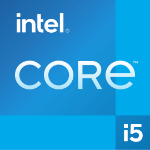
Hot Product
Intel Core i5-12600K processor 20 MB S...
Login for pricing
|
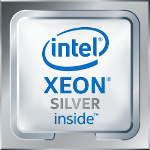 Intel Xeon 4208 processor 2.1 GHz 11 MB
Login for pricing
Intel Xeon 4208 processor 2.1 GHz 11 MB
Login for pricing
|
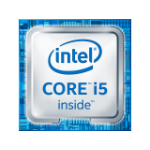 Intel Core i5-9500 processor 3 GHz 9 M...
Login for pricing
Intel Core i5-9500 processor 3 GHz 9 M...
Login for pricing
|
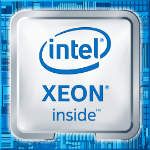
Popular
Intel Xeon W-2223 processor 3.6 GHz 8....
Login for pricing
|
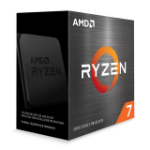
Bestseller
AMD Ryzen 7 5800X processor 3.8 GHz 32...
Login for pricing
|
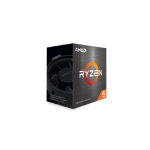
Recommended
AMD Ryzen 5 5600G processor 3.9 GHz 16...
Login for pricing
|
|---|---|---|---|---|---|---|
| SKU |
BX8071512600K
|
CD8069503956401
|
CM8068403362610
|
CD8069504394701
|
100-100000063WOF
|
100-100000252BOX
|
| Manufacturer |
Intel
|
Intel
|
Intel
|
Intel
|
AMD
|
AMD
|
| Processor lithography |
N/A
|
up to 22nm
|
up to 22nm
|
up to 22nm
|
up to 22nm
|
up to 22nm
|
| Processor family |
Intel Core i5
|
Intel Xeon Silver
|
Intel Core i5
|
Intel Xeon W
|
AMD Ryzen 7
|
AMD Ryzen 5
|
| Processor socket |
LGA 1700
|
LGA 3647 (Socket P)
|
LGA 1151 (Socket H4)
|
LGA 2066 (Socket R4)
|
Socket AM4
|
Socket AM4
|
| Processor cores |
10
|
8
|
6
|
4
|
8
|
6
|
| On-board graphics card |
Y
|
N
|
Y
|
N
|
N
|
Y
|
| Discrete graphics card |
N
|
N
|
N
|
N
|
N
|
N
|
| Cooler included |
N
|
N
|
N
|
N
|
N
|
Y
|
| Package type |
Box
|
Tray
|
Tray
|
Tray
|
Box
|
Box
|

